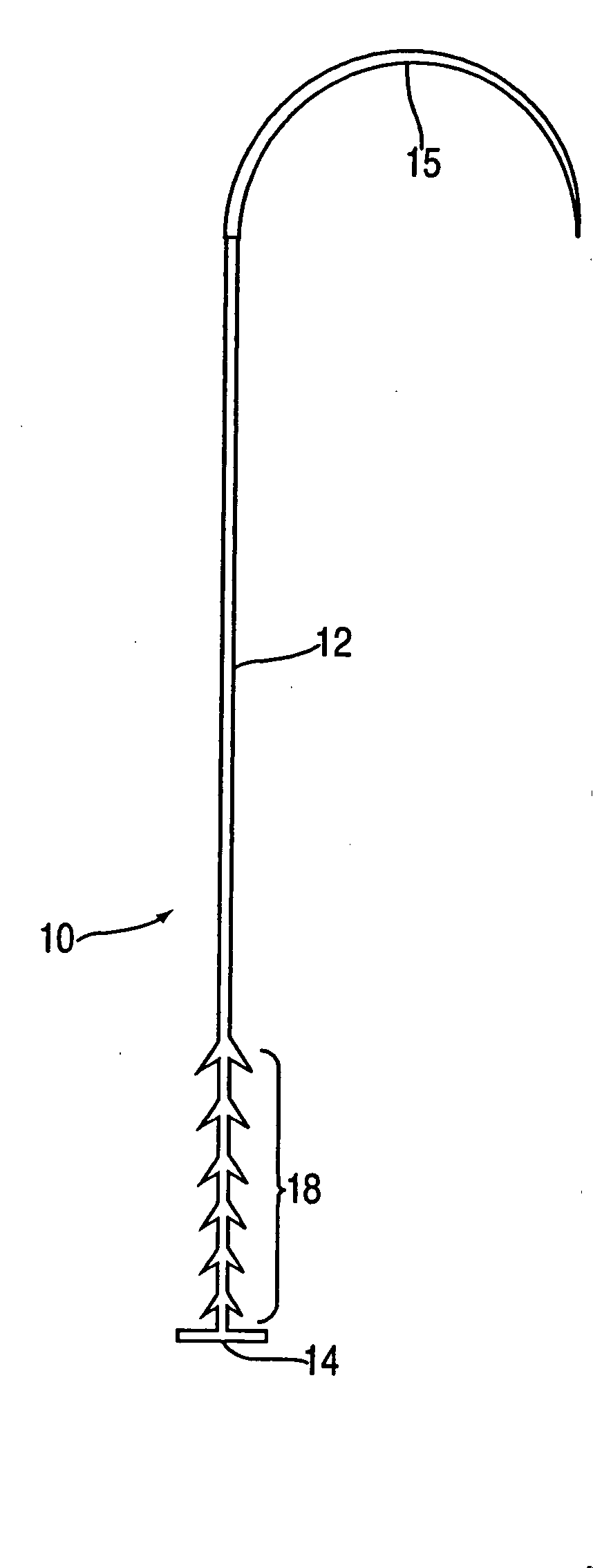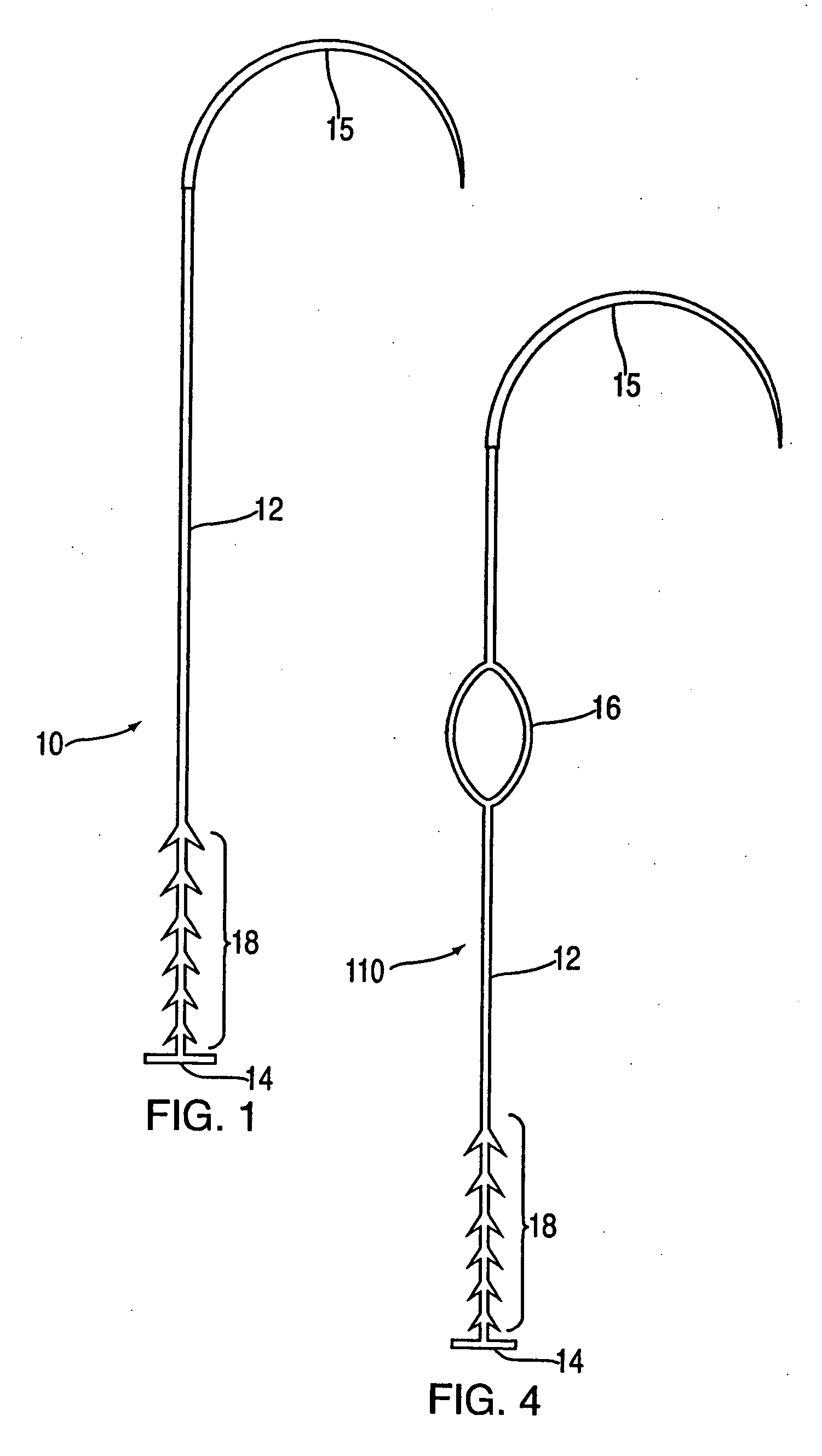Device and method for tacking a prosthetic screen
- Summary
- Abstract
- Description
- Claims
- Application Information
AI Technical Summary
Benefits of technology
Problems solved by technology
Method used
Image
Examples
Embodiment Construction
[0044] Turning now to FIG. 1, a prosthetic screen tacking device 10 includes a filament 12 with a perpendicular foot 14 at one end and a swaged needle 15 at the other end. A plurality of barbs 18 are provided adjacent to the foot 14. The foot 14 may be a linear form, so that end of the device forms a T or may have other configurations as described in more detail in the previously incorporated parent application. The barbs 18 are angulated in such a manner that they permit movement of the device through tissue in one direction (toward the needle 15), but prevent movement in the opposite direction (toward the foot 14).
[0045]FIGS. 2 and 3 schematically illustrate how the tacking device 10 is used in the open method of hernia repair. Several devices 10 are pulled through the prosthetic screen 1 equidistantly along the periphery (circumference) of the prosthesis 1. The assembly is then positioned within the open peritoneal cavity, over the viscera (FIG. 2). The swaged needle 15 is then ...
PUM
 Login to view more
Login to view more Abstract
Description
Claims
Application Information
 Login to view more
Login to view more - R&D Engineer
- R&D Manager
- IP Professional
- Industry Leading Data Capabilities
- Powerful AI technology
- Patent DNA Extraction
Browse by: Latest US Patents, China's latest patents, Technical Efficacy Thesaurus, Application Domain, Technology Topic.
© 2024 PatSnap. All rights reserved.Legal|Privacy policy|Modern Slavery Act Transparency Statement|Sitemap



